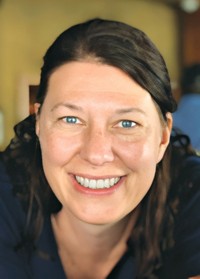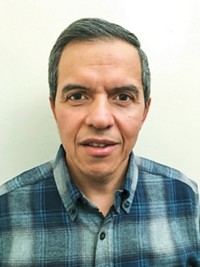Advertisement
Grab your lab coat. Let's get started
Welcome!
Welcome!
Create an account below to get 6 C&EN articles per month, receive newsletters and more - all free.
It seems this is your first time logging in online. Please enter the following information to continue.
As an ACS member you automatically get access to this site. All we need is few more details to create your reading experience.
Not you? Sign in with a different account.
Not you? Sign in with a different account.
ERROR 1
ERROR 1
ERROR 2
ERROR 2
ERROR 2
ERROR 2
ERROR 2
Password and Confirm password must match.
If you have an ACS member number, please enter it here so we can link this account to your membership. (optional)
ERROR 2
ACS values your privacy. By submitting your information, you are gaining access to C&EN and subscribing to our weekly newsletter. We use the information you provide to make your reading experience better, and we will never sell your data to third party members.
Environment
Revised Undergraduate Guidelines
by Thomas J. Wenzel, Chair , Clark R. Landis, Vice Chair, Committee On Professional Training
June 1, 2015
| A version of this story appeared in
Volume 93, Issue 22
For 75 years, the American Chemical Society’s Committee on Professional Training (CPT) has been responsible for approving chemistry programs to offer certified undergraduate degrees. The ACS guidelines, which set standards aimed at desired learning outcomes and the resources needed to provide an excellent and rigorous education, have evolved over the years to keep up with changes in education and the chemistry profession. CPT approved revised guidelines and evaluation procedures for bachelor’s degree programs at its January 2015 meeting in New Orleans. The guidelines can be found, with supplemental documents, on the CPT website at www.acs.org/cpt.
As CPT evaluated programs under the previous version of the guidelines, which were released in 2008, it became apparent that revisions were needed to provide programs with additional flexibility. One example concerns limits on maximum teaching contact hours with students. The limits were intended to ensure that faculty and instructors have enough time for grading, curriculum and professional development, research, and other professional activities. Some programs were out of compliance because uneven teaching loads from one term to another caused violations of the guidelines. We heard from the community that teaching schedules with alternating busier and lighter terms could enable more research and curriculum development, activities that CPT wants to promote. Also, laboratory instructors had problems meeting the limit of 15 contact hours per semester when lab sections were four hours long. As a result, we modified the guidelines.
Other changes in the 2015 guidelines seek to improve student preparation for postbaccalaureate careers. However, the committee does not prescribe a one-size-fits-all curriculum for approved programs. Consider polymers, which are important to society and a major source of jobs for professional chemists. CPT debated the essential role of polymers in the curriculum for a certified degree. Most compelling to CPT is the fact that the properties of large molecules and aggregated systems are different from those of small molecules and that students need to understand these differences. The effect of scale on the properties of matter emerges in several related areas. Therefore, the 2015 guidelines require that the curriculum for certified graduates include the principles that govern macromolecular, supramolecular, mesoscale, and nanoscale systems. Although a dedicated in-depth course would meet this requirement, we anticipate that most departments will distribute these principles across multiple courses required for the certified degree.
Another change in the 2015 guidelines involves equipment that students use in a hands-on fashion. A functioning nuclear magnetic resonance spectrometer for undergraduate use remains a requirement. In addition, students completing a certified degree will now need hands-on use of on-site equipment from at least four of five categories: optical molecular spectroscopy, optical atomic spectroscopy, mass spectrometry (including GC/MS and LC/MS), chromatography and separations, and electrochemistry. Furthermore, several facets of safety infrastructure and practices have been strengthened in the 2015 guidelines.
The roles of online and virtual instruction in the curriculum are evolving rapidly. CPT recognizes that some online instruction can enhance learning but that it presents guideline challenges. One concern relates to faculty workload and the amount of credit awarded for online classes. The 2015 guidelines state that online activities that are substitutes for classroom instruction should be assigned at least the same instructor contact hour value as equivalent face-to-face classroom experiences. Another concern relates to the quality of the experience for the student. The 2015 guidelines state that courses taught partially or wholly online should provide at least the same skill development and content as the corresponding face-to-face experience. General chemistry lab experiences that prepare students for foundation areas must be primarily hands-on and supervised. CPT will continue to work with the community for insights about the scope of these modes of instruction within the chemistry curriculum.
The 2015 guidelines continue to emphasize flexibility in designing curricula. Curricular innovation is encouraged. The guidelines don’t specify topics to be covered in foundation courses, although CPT does publish supplements that provide guidance on common topics and skill-building activities within these areas. We encourage the use of active-learning pedagogies in the classroom and lab in order to promote student skill development in areas of problem solving, chemical literature and information management, laboratory safety, oral and written communication, teamwork, and ethics.
Throughout the revision process, CPT attempted to balance desired attributes such as excellence, rigor, and continual improvement against flexibility, which in turn fosters innovation and enables adaptation to the institution’s environment.
We thank the community for participating in our efforts. Many people attended open meetings that we held throughout the process and sent comments to us. That feedback was essential in helping us craft the final set of guidelines. We look forward to working with the community in the implementation of the 2015 guidelines and promoting continued excellence in undergraduate chemistry education.
Views expressed on this page are those of the authors and not necessarily those of ACS.







Join the conversation
Contact the reporter
Submit a Letter to the Editor for publication
Engage with us on Twitter